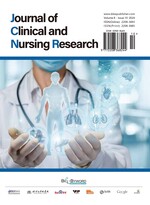Abstract
Objective: To investigate the effects of prone ventilation in patients with severe traumatic brain injury combined with pulmonary infection. Methods: A total of 100 patients with severe traumatic brain injury combined with pulmonary infection in the hospital were randomly divided into a prone ventilation group and a conventional ventilation group, with 50 patients in each group. The Glasgow Coma Scale (GCS) score, APACHE II score, sputum culture results, oxygenation indicators, and prognosis were compared between the two groups. Data were processed using SPSS 25.0 statistical software, and t-tests and chi-square tests were used to compare continuous and categorical variables, respectively. Results: The experimental group showed better oxygenation indicators, a lower positive rate of sputum cultures, and reduced intracranial pressure compared to the control group (all P < 0.05). Multivariate Cox regression analysis indicated that GCS score, APACHE II score, and prone ventilation were independent risk factors affecting patient prognosis (all P < 0.05). Conclusion: Prone ventilation can improve oxygenation, reduce the risk of pulmonary infection, and decrease intracranial pressure in patients with severe traumatic brain injury combined with pulmonary infection, thereby improving patient prognosis. GCS score and APACHE II score can serve as important indicators for prognostic evaluation.
References
Wu X, Li Y, Gao J, 2023, Research Progress on the Effects and Mechanisms of Electroacupuncture on Radiation-Induced Brain Injury. Sheng li Xue Bao, 75(1): 108–114.
Fan E, Brodie D, Slutsky AS, 2018, Acute Respiratory Distress Syndrome. JAMA, 319(0098-7484): 698–698.
Campayo NM, Sanz J, Fajardo IM, 2020, Symmetric Chest Pressure Ulcers, Consequence of Prone Position Ventilation in a Patient with COVID-19. Journal of the European Academy of Dermatology and Venereology, 34(11): e672–e673.
Mu M, 2018, A Brief Discussion on the Clinical Application of Prone Position Ventilation in Hypoxemia. Medical Information, 31(A02): 2.
Yao X, Zhang X, Pan Y, et al., 2023, The Intervention Effect of a Multidisciplinary Team Cardiac Rehabilitation Model on the Prognosis of Patients with Acute Decompensated Heart Failure. Hebei Medicine, 45(3): 5.
Hu Y, Ying L, Zhou Y, et al., 2022, The Impact of Prone Position Mechanical Ventilation on Airway Flora Distribution in Patients with Severe Pneumonia. Chinese Journal of Nosocomial Infection Control, 32(15): 2279–2283.
Ma H, Ding Y, 2021, Exploring the Application Effect of Prone Position Mechanical Ventilation in Patients with Severe Pneumonia Complicated with Acute Respiratory Distress Syndrome (ARDS). Health Companion, 2: 118.
Jia L, Wang Y, Shang Q, et al., 2010, Application of Prone Position Ventilation in Severe Traumatic Brain Injury Complicated with Pulmonary Infection. Qilu Nursing Journal, 16(29): 7–8.
Tang Y, Lu Z, Ju H, 2020, Analysis of the Application of Prone Position Ventilation in the Treatment of Neonatal Acute Lung Injury and Respiratory Distress Syndrome. Practical Gynecological Endocrinology and Electronic Journal, 7(6): 2.
Dabrowski W, Siwicka-Gieroba D, Robba C, et al., 2021, The Prone Position Must Accommodate Changes in IAP in Traumatic Brain Injury Patients. Critical Care (London, England), 25(1): e123.
Yang B, 2019, A Brief Discussion on Independent Risk Factors Affecting the Prognosis of Patients with Traumatic Brain Injury. Contemporary Medicine Forum, 17(12): 2.
Xu C, 2021, Investigation of the Association Between Postoperative Pulmonary Infection Risk and Tracheostomy Tube Retention Time and GCS Scores in ICU Patients with Severe Craniocerebral Injury, and Corresponding Countermeasures. Anti-Infective Pharmacy, 18(3): 413–415.
